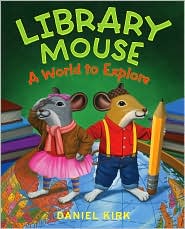In order to save Merlin, Jack and Annie must continue their quest to find the secrets of happiness. In this mission the Magic Tree House takes them to a place they have never visited before: Antarctica. It is here that they meet scientists, reporters, and penguins. There goal is to find the Cave of the Ancient Crown. This book was awarded Children's Choice in 2009.
Reading Level:
Lexile: 530
Genre/Theme:
Fiction
Penguins
Antarctica
Subject:
English Language Arts
Science
Teaching ideas for a 3rd Grade Classroom:
Web Resources: http://www.magictreehouse.com/#- students can use this site to create their passport, play games, or watch book trailers.
http://www.magictreehouse.com/#teachers-guide-40-penguin - teachers can use this site to get ideas that will help increase students comprehension through various activities.
http://kids.nationalgeographic.com/kids/animals/creaturefeature/emperor-penguin/ is another great website which students can use to research facts about the Emperor Penguin.
Suggested Delivery: Small Groups
Before Reading:
Vocabulary to introduce: cloak, enchanters, Gondwana, petrels, parkas, altitude sickness
Provide students with an anticipation guide that has the following three questions: 1) What do Jack and Annie have to look out for on Mount Erebus? 2) What scientific research station do Jack and Annie visit in Antarctica? 3) Eons ago, Antarctica broke away and drifted south from what supercontinent?
During Reading:
Have students use split-page notetaking to write down the main idea on one side and supporting details on the other. Also, have students (after the main idea) state whether they believe this is fact or fiction. This will help them as they conduct their research after the reading. Have each student share their notes with their group.
After Reading:
Introduce the research guide that accompanys this book, Penguins and Antarctica. Have students use the information from both books to conduct research about the Emperor Penguin. Students may also use the website from above from National Geographic Kids. Students may continue working in small groups as they take notes, write, edit, and revise their research findings.
Osborne, M. P., & Murdocca, S. (2008). Eve of the Emperor penguin. New York: Random House.





